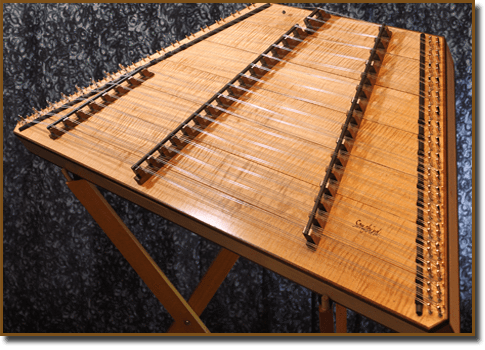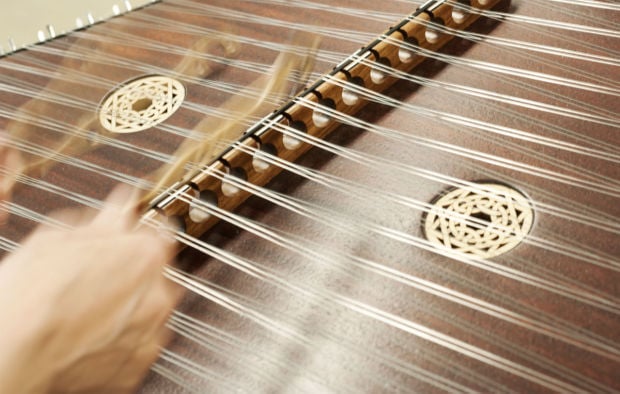How Long Does It Take To Learn The Hammered Dulcimer: The time it takes to learn the hammered dulcimer varies depending on factors like dedication, prior musical experience, and practice consistency, typically ranging from a few months to several years.
Understanding the Basics of the Hammered Dulcimer
Before delving into the time it takes to learn the hammered dulcimer, it’s essential to understand the instrument’s fundamental aspects. The hammered dulcimer is a percussion-based string instrument consisting of a trapezoidal wooden box with strings stretched across it.

The strings are struck with small hammers to produce sound, hence the name “hammered” dulcimer. It is played on the lap or on a stand, and the musician creates melodies by striking different strings with varying degrees of force.
Factors Influencing the Learning Duration
The time it takes to learn the hammered dulcimer can vary significantly from one individual to another due to several factors. Some of the key influencers include:
- Musical Background: Musicians with prior experience playing other instruments or a solid understanding of music theory may find it easier to grasp the hammered dulcimer’s concepts and techniques.
- Dedication and Practice Time: Regular and focused practice is crucial in mastering any musical instrument. The more time a learner dedicates to practicing the hammered dulcimer, the quicker they are likely to progress.
- Natural Talent: As with any skill, some individuals may have a natural talent for playing the hammered dulcimer, which can speed up the learning process.
- Instructor and Teaching Method: The quality of instruction and teaching method can significantly impact the learning curve. A skilled and supportive instructor can guide learners efficiently and keep them motivated.
- Personal Goals: The level of proficiency one aims to achieve with the hammered dulcimer also plays a role. Those striving for basic proficiency may achieve it faster than those aspiring to become advanced players.
The Role of Practice and Consistency
It cannot be emphasized enough that practice is vital in learning to play the hammered dulcimer. Regular practice sessions, even if they are relatively short, can be more effective than occasional lengthy practices. Consistency allows the brain and muscles to develop the necessary neural pathways and muscle memory required for playing the instrument.
To make the most out of practice sessions, learners should focus on specific techniques, scales, and musical pieces. A varied practice routine that includes warm-ups, technical exercises, and playing enjoyable tunes can keep learners engaged and motivated.
Typical Learning Timeframes
It is essential to manage expectations regarding the time it takes to learn the hammered dulcimer. Becoming proficient with the instrument is a journey that varies for each individual. Here is a general breakdown of the typical learning timeframes:
- Beginner Level: At this stage, learners get acquainted with the hammered dulcimer, its layout, and basic playing techniques. With consistent practice, beginners can expect to play simple tunes within a few weeks to a few months.
- Intermediate Level: Progressing to the intermediate level involves learning more complex tunes, improving technique, and gaining confidence in playing. This stage may take six months to a year or more, depending on dedication and practice.
- Advanced Level: Achieving an advanced level of proficiency can take several years. At this stage, learners can tackle intricate melodies, explore various musical styles, and possibly compose their pieces.
Tips for Accelerating the Learning Process
While learning any musical instrument takes time, aspiring hammered dulcimer players can use the following tips to enhance their learning journey:
- Structured Learning: Enroll in formal lessons with a qualified hammered dulcimer instructor to ensure a structured learning experience tailored to your skill level.
- Practice Regularly: Set aside dedicated practice time every day or several times a week to reinforce learning and build muscle memory.
- Seek Inspiration: Listen to experienced hammered dulcimer players to gain inspiration and motivation. Attend concerts and workshops if possible.
- Be Patient and Persistent: Learning an instrument is a gradual process, and setbacks are normal. Stay patient and persistent, and celebrate your progress along the way.
- Record Your Practice: Recording your practice sessions allows you to review your performance objectively and identify areas for improvement.
- Collaborate with Others: Playing with fellow musicians or joining a dulcimer ensemble can provide valuable learning experiences and foster a sense of community.
Is the hammer dulcimer hard to learn?
The difficulty of learning the hammered dulcimer largely depends on the individual’s musical background, dedication, and practice routine. For those with prior experience playing musical instruments or knowledge of music theory, the transition to the hammered dulcimer might be smoother.

The unique playing technique of striking the strings with hammers can pose a challenge initially, but with consistent practice and guidance from a qualified instructor, most learners can grasp the basics within a few weeks. Like any instrument, mastering the hammered dulcimer takes time, but the joy of creating its captivating sounds makes the effort worthwhile.
Is a dulcimer easier than a guitar?
Comparing the hammered dulcimer and the guitar in terms of difficulty is subjective, as it varies from person to person. Both instruments have distinct playing techniques and require dedicated practice. The guitar involves pressing strings against frets to produce different notes and chords, which can be initially challenging for beginners.
On the other hand, the hammered dulcimer relies on striking strings with hammers, requiring coordination and precision. Some may find the dulcimer’s layout and technique easier to grasp, while others may prefer the guitar’s versatility and familiarity. Ultimately, the ease of learning depends on individual preferences and previous musical experiences.
What is the best beginner hammer dulcimer?
For beginners, selecting the right hammered dulcimer is crucial for a positive learning experience. The best beginner hammer dulcimer should offer a combination of quality craftsmanship, ease of playability, and affordability.
Some reputable brands known for producing excellent beginner models include Dusty Strings, McSpadden, and Song of the Wood. These instruments often come with instructional materials, providing beginners with valuable resources to kickstart their learning journey. However, it is advisable to try different models, if possible, and seek advice from experienced players or instructors to find a dulcimer that suits individual preferences and needs.
What country is the hammered dulcimer from?
The hammered dulcimer, known by various names in different cultures, has a rich historical background spanning multiple countries. Its origins can be traced back to the Middle East, with ancient versions of the instrument found in Persia and Iraq.

Throughout history, the hammered dulcimer traveled along trade routes and cultural exchanges, becoming popular in countries like Turkey, Greece, and Armenia. It also made its way to Europe during the medieval period, where it evolved into various regional forms. Today, the hammered dulcimer is cherished and played worldwide, carrying with it a diverse heritage of musical expression.
FAQs
Can I learn the hammered dulcimer without any prior musical experience?
Yes, it is possible to learn the hammered dulcimer without prior musical experience. However, having some background in music or playing another instrument may facilitate the learning process.
How often should I practice to make noticeable progress?
Consistent practice is more important than long practice sessions. Aim for at least 20-30 minutes of focused practice each day or several times a week to see noticeable progress.
Is it necessary to take formal lessons, or can I learn from online resources?
While online resources can be helpful, formal lessons with a qualified instructor offer personalized feedback and guidance, which can significantly enhance your learning.
Can children learn to play the hammered dulcimer?
Yes, children can learn to play the hammered dulcimer, but they may require age-appropriate instruction and supervision. Many young musicians have found great joy and success in playing this instrument.
Conclusion
Learning the hammered dulcimer is a rewarding and fulfilling endeavor that requires dedication, practice, and patience. While the time it takes to become proficient varies for each individual, consistent practice and structured learning can significantly accelerate progress.
Whether you’re a beginner or an experienced musician, the journey of exploring the hammered dulcimer is sure to be a musical adventure worth undertaking. Embrace the learning process, stay persistent, and enjoy the melodious journey of mastering this beautiful instrument.


